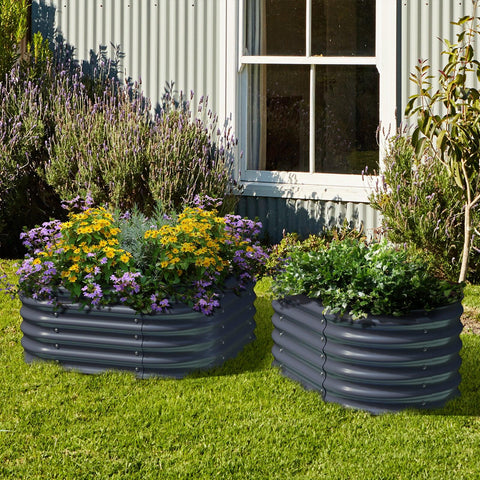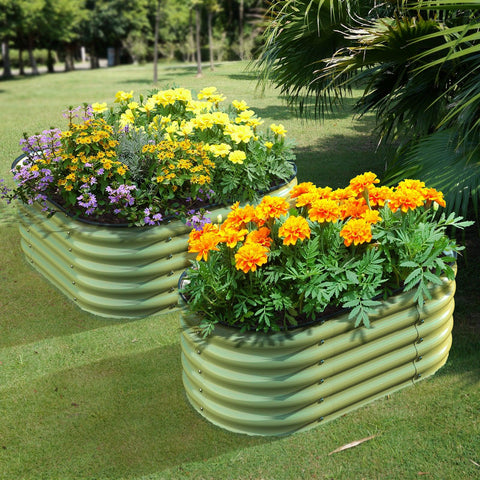5 Kinds of Wild Flowers Planted In The Garden or Garden beds
Planting wild flowers is a simple way to add extra color and beauty to your garden or garden beds. Most kinds of wild flowers have low maintenance cost, drought resistance and easy growth. They even thrive in various soil types and reward you with beautiful flowers throughout the growing season.
Wild flowers attract pollinators such as bees, butterflies and hummingbirds to your garden. Planting local wild flowers helps support biodiversity, provide habitat for local wildlife, and protect local ecosystems. More importantly, they can also improve the health of garden soil. Many wild flowers have deep roots, which help to loosen and ventilate the earth and improve its structure and fertility.

The best type of wild flowers to grow in your garden depends on your climate, the type of soil, and the amount of sunlight your garden receives. Here are some examples of popular wildflowers that are easy to grow in many areas.
Penstrom
Penstamons are perennial wild flowers, which produce colorful tubular flowers from mid spring to early summer. Penstein is a great choice to attract bees, butterflies and hummingbirds. They also bear deer.
These wild flowers thrive in sufficient sunlight and need some shady soil. They like to be dry to medium humidity and should be fertilized once every spring. Pentemon plants are between 1 and 3 feet tall and wide, depending on the variety.
Butterflies
Asclepiastuberosa is a popular choice in Butterfly Garden, because it is the host plant of many butterflies, including monarch butterflies. Once mature, plants will grow about 1 to 3 feet tall and 2 to 3 feet wide.
This energetic wild flower produces bright clusters from late spring to summer. These plants are deer resistant and grow best in sufficient sunlight and well drained soil. There is usually no need to give them extra fertilizer.
Compositae
Compositae (Solidago) is a cold resistant, easy to plant perennial plant, native to North America. Depending on the species, plants are 1 to 5 feet tall and 1 to 3 feet wide.
It is famous for its bright yellow flowers and tall spiky stems, which often appear in wild gardens and backyard grasslands. Flowers attract pollinators and are an important food source for local insects in the late growing season.
Compositae plants thrive in sufficient sunlight and well drained soil. It blooms from late summer to early autumn. In addition to drought resistance and deer resistance, compositae plants usually do not need additional fertilizer.
Aster
Aster is a popular autumn flowering perennial plant, which can produce gorgeous daisy like flowers of various colors, including white, pink, purple and blue. When many other plants begin to fade, they provide a burst of color in the garden.
These multifunctional plants can grow in various soil types and conditions, making them suitable for most landscapes. Give your aster about an inch of water every week and fertilize it every spring. Removing used flowers on a regular basis will encourage plants to bloom more.
Most species of Aster are between 1 and 4 feet tall, and some types can be up to 6 feet tall. These plants are usually 1 to 3 feet wide.
Aster is native to North and South America, Europe and Asia, and hundreds of species have been found around the world. It is always best to plant local wild flowers as much as possible, so find out the varieties planted in your area.

Blanket flower
Blanket flowers (Galatia) are a beautiful and low maintenance supplement to any garden. These energetic wild flowers produce bright and colorful windmills, including red, orange, yellow or a combination of these colors. They bloom from early summer to mid autumn and grow to 2 or 3 feet tall and 1 or 2 feet wide.
Blanket flowers grow best in sunny and well drained soil. Once established, plants usually do not require additional fertilizer. These widely used wild flowers are very drought resistant, making them an excellent choice for dry land landscaping or areas with limited water. They also bear deer.
Planting local plants and wild flowers
Throughout the growing season, planting mixed wildflowers can provide a range of colors and textures in your garden. There are many kinds of wild flowers to choose from, each with a unique appearance and flowering time. It is a good idea to study specific wild flowers in your area, because they are very suitable for local growth conditions.
